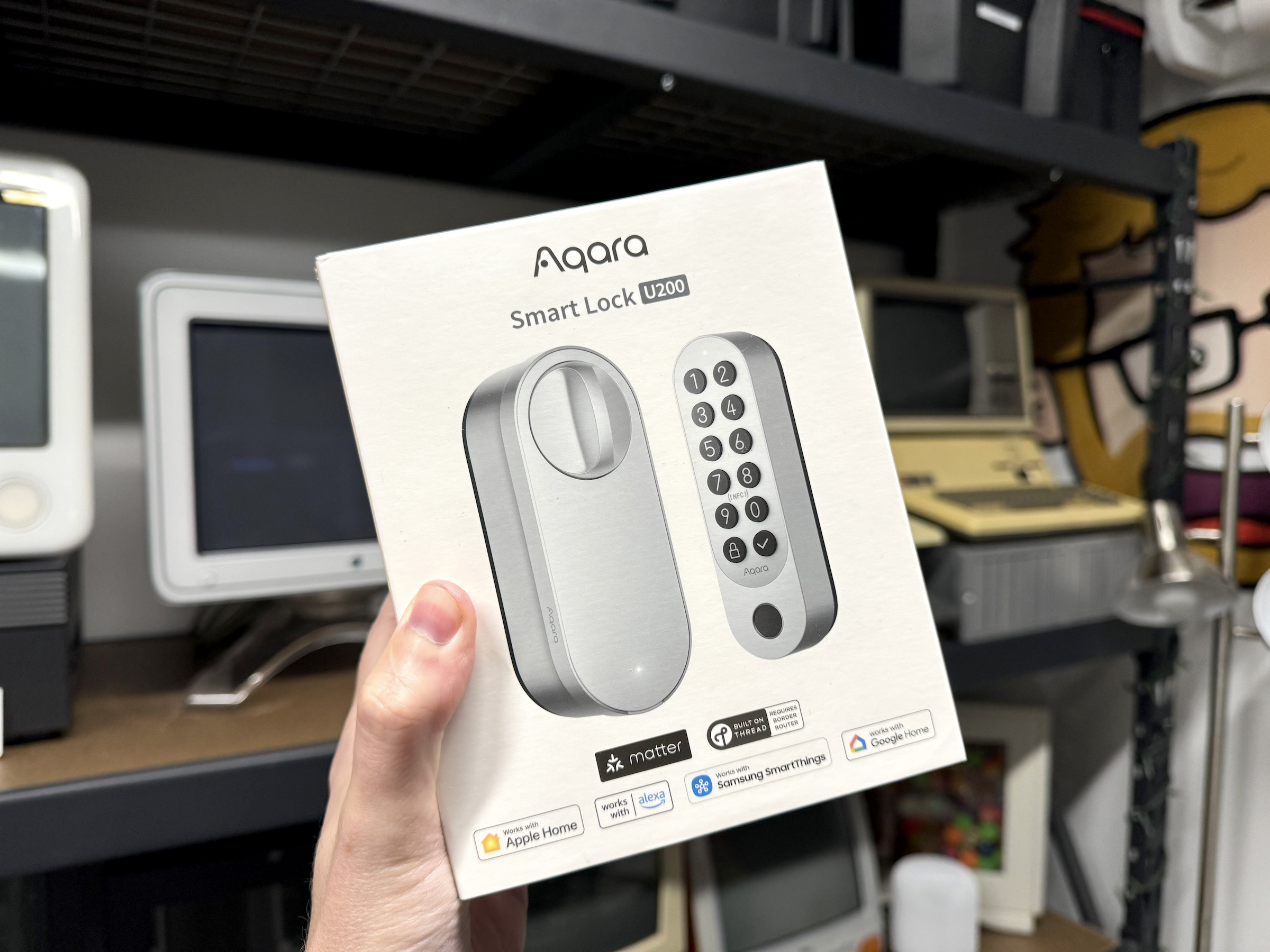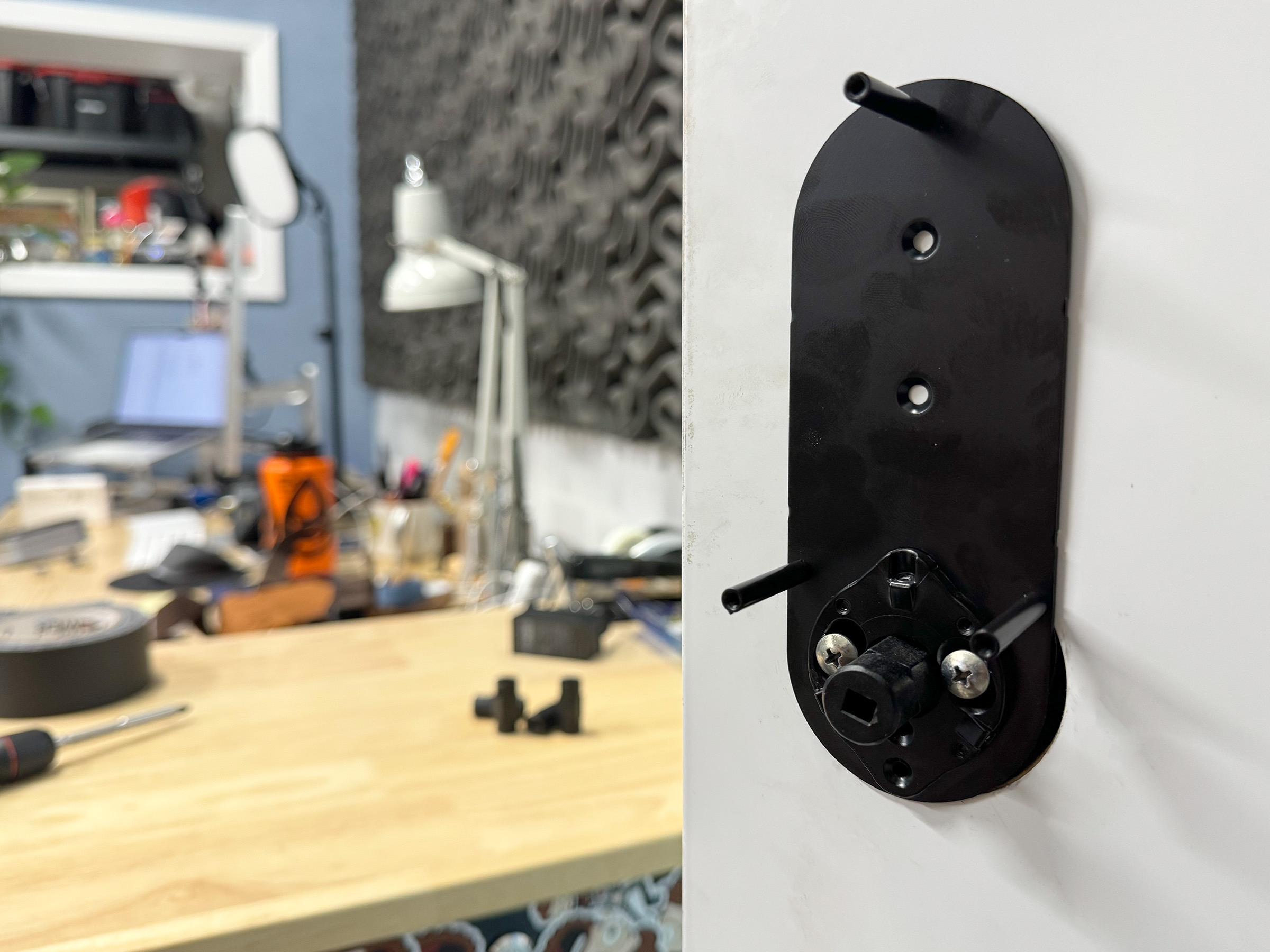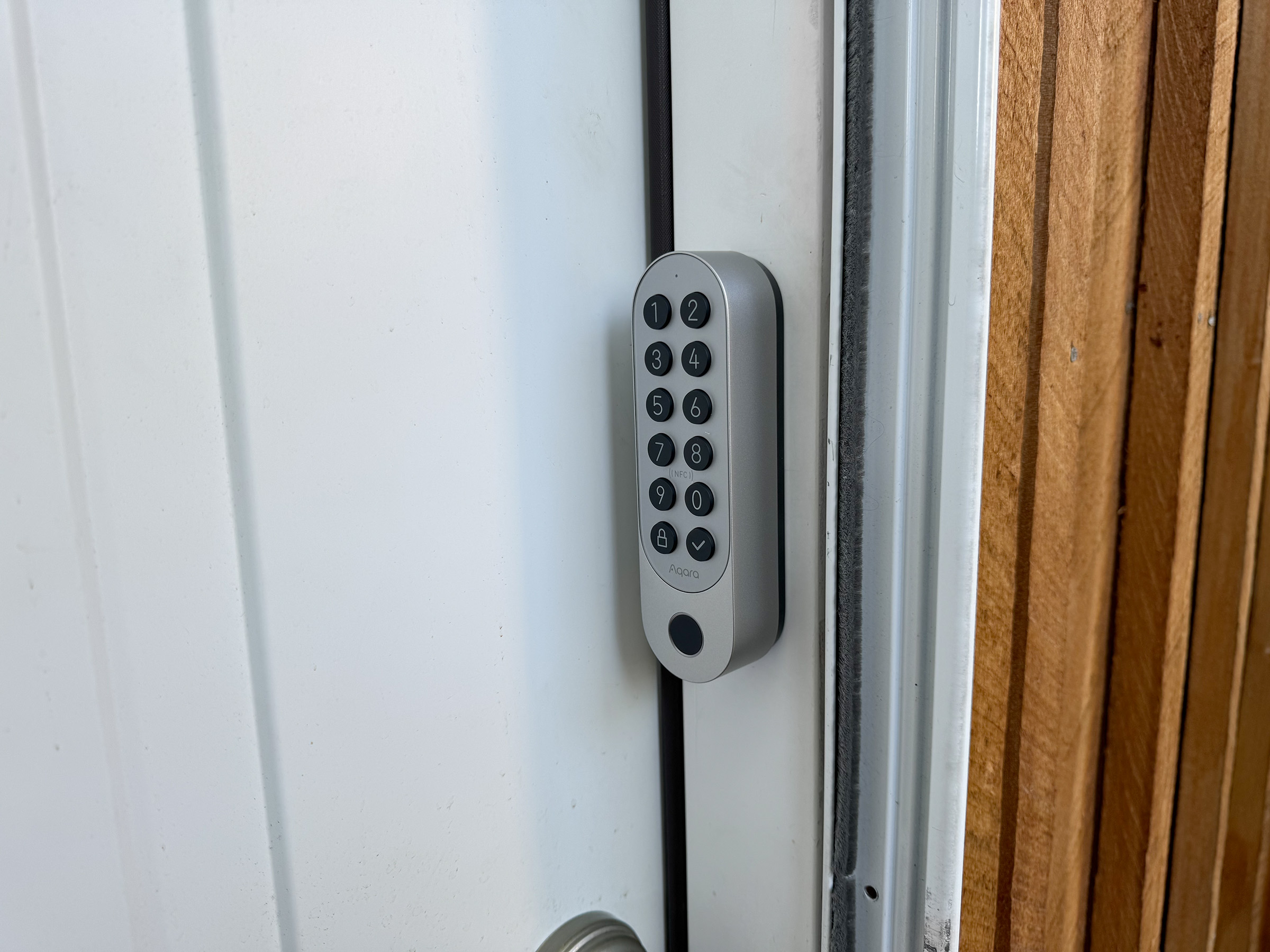Earlier this week, it was announced that Aqara was shipping its new smart lock, the U200.
For a while, I’ve been thinking about a product like this for the door to my studio, so I jumped on it, ordering the $269 lock from Amazon.

I got that scar on my thumb running Ethernet cable through my old house like 12 hours ago. Be careful with knives!
I don’t have much experience with products in this category, but I do have a bunch of Aqara water sensors stashed around the house, under sinks and in the pan for our hot water heater. I’m also a fan of their smart home switches for triggering HomeKit scenes easily.
The U200 integrates with your existing lock by motorizing the interior side of it. In my case, the U200 interfaced with the inside of the deadbolt directly. I pulled the lock apart, mounting the U200’s mounting plate using the screws from my original, old-fashioned lock.

This was pretty easy for me, given two facts:
- This door and lock were installed only a couple of years ago, so everything is nice and modern.
- I’m handy and know my way around a deadbolt.
Sadly, Aqara’s installation guide is pretty lackluster, and doesn’t really talk about some of the adjustments that may be necessary in some cases. The package comes with a custom-cut piece of 3M double-sided tape and a few spacers of various thicknesses, but not a lot of detail is given on when to use them. If you’re patient, you’ll work it out, though.
(The other janky part of the experience comes to the Aqara hub. In setup flow for the lock, the app says the new M3 hub is required for Matter integration, but if you have an M2 hub like me, you can expose it to Matter if you drill into its settings. Aqara should make this clear so people don’t needlessly upgrade their hubs.)
Once the plate was attached, the large motorized component screws on. It’s chunky, and a lot of the space is taken up by a removable battery that recharges via a USB-C port.

The other part of the equation is the keypad, which includes a fingerprint reader and an NFC reader. The keypad can be used outdoors, but I opted to mount mine in between the PodCabin’s main door and its outer screen door to keep it out of sight. As long as its within 2 meters of the lock, Aqara says placement is flexible.

This thing runs on several AAA batteries, and slides off a mounting plate that is affixed to the wall with a combination of 3M double-sided tape and screws.
Once everything was in place, I fired up the Aqara iOS app and added the lock to my existing setup. As I mentioned above, I wasn’t able to enable its Matter connection, but everything works just fine without it.
Well, mostly fine. I know this thing has been out for like 2 days, so I can forgive some weirdness, but I had to pull the battery from the lock side of the device to get it to pair with HomeKit. Once it did, iOS walked me through creating my very first HomeKey. Jason Snell wrote about this feature of iOS and watchOS back in 2022, but in short, you can use your device to unlock the door using NFC.
This means I can unlock my office with my fingerprint, a PIN code, the Aqara app, the Home app, and with my Watch or iPhone. I love that flexibility.
This is obviously not a full-blown review, but I am excited to finally have a reason to explore this part of the smart home landscape. I’m living in the future!
I’ll keep you posted on how all of this goes over the coming months.
![]()